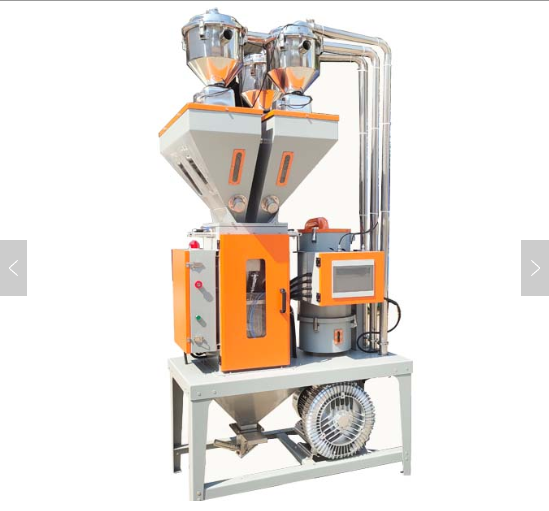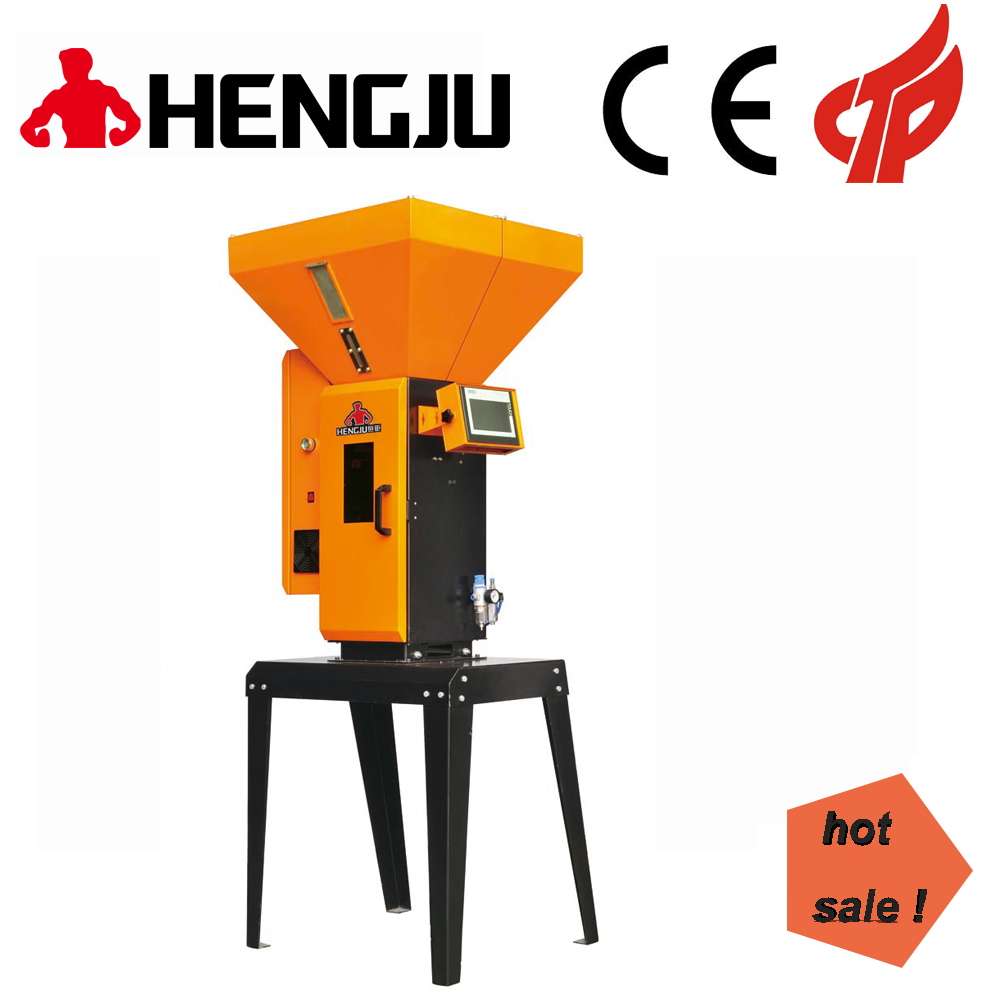|
Central feeding system| RSS
|
|
central feeding system |
 |
central feeding system |
Automatic feeding system for injection molding industry |
source:Central feeding system Author:Central feeding system time:2020-10-22 09:37:07 |
|||
| The material is fed into a heated barrel, mixed, and forced into the cavity, where it cools and hardens into the structure of the cavity. After the product is usually designed by an industrial designer or engineer, the mold is precisely processed by the tool manufacturer from metal, usually steel or aluminum, to form the required part of the feature. Injection is widely used to manufacture a variety of parts, from the smallest parts to the entire body car panel. Injection molding is a complicated technology that may accompany production problems. They can be caused by mold defects, and most of the time, they are also formed by parts. The most common molding defects such as flashing, shrinkage, short fillers, and welding lines, these defects lead to poor molded parts and lower production efficiency. Some defects are caused by material mixing. The color of raw materials and other additives are often mixed before plastic molding in the molding plant. Therefore, it is very necessary to study the automatic batching and automatic feeding machine of plastic particles. Manual mixing and feeding can cause many of the following problems: 1. Color loss due to poor color mixing 2. Shaping defects, such as color streaks or shadow variations 3. Increase the inhibition process 4. Optimization of reconstruction caused by machine failure 5. Operator fatigue 6. High labor cost of material mixing Automatic feeding system Plastic blending: Molded plastics are usually a mixture of 2 or more materials. Color and other additives are often mixed with the original plastic material in the plastic molding process. The precision and mixing uniformity of a particular mixed material are the two main considerations. Automatic feeding system Mixed precision: The waste is discarded during the molding process, and is usually shredded and separated from the molded plastic product. Waste is often generated in the plastic molding process. According to the molding process of the mold, the mold structure and the shape of the product, the waste can be weighed as a finished product. Waste materials are usually recycled, reground and mixed with virgin resin in a certain proportion to reduce material costs and improve the environment. The mixing ratio of recycled plastic and virgin resin is different, depending on the type of material and the quality of the product required. The mixing ratio is usually not required. In order to produce products with specific mechanical properties, it is usually necessary to mix two or more types of plastics together to produce certain specific products. Usually more accurate is required, so volume or weight mixers are used to supply supply processing machines to mix with specified materials. Automatic feeding system Type of mixing process Plastics can be mixed in many ways. The most common mixing techniques are as follows: 1) Manual mixing 2) Proportional loader 3) Volume mixing 4) Weight mix Automatic feeding system Manual mixing: The simplest mixing method is to manually remove the different components (a bucket or a drum) from the container, close the container and roll on the floor to evenly mix the ingredients; the blend is then sucked through a feeding throat that holds the hopper into the placement processor . Manual mixing is achieved by using a concrete mixer to mix with a manual feed assembly instead of rolling a container on the floor. Proportional vacuum loaders Vacuum loaders are widely used in the plastics industry to transfer raw resin materials, regenerated or master batches from storage sources to processors. This is a mixing method rarely used in the plastics industry. The amount of material transferred determines the size and shape of the particles, the amount of air sucked through the pipe, and the degree of vacuum in the system. One suction fan and one filter can be inserted into a single separation hopper from two storage boxes through two pipes to suck two different materials. Different objects can be transferred to the separation hopper inside the chamber. More accurate than the ratio that appears in the description of the vacuum loader. They appear in many different forms of the plastic industry. The main material mixing of feed additives is through a feed screw drive motor and driver. Main material received from The device passes the gravity of a mixing chamber to the feed port of the machine. The purpose of the mixing chamber is to mix the main materials and uniform additives. The rotation speed of the screw is fixed, which depends on the required mixing ratio, the size of the screw groove, and the size of the additive particles. When applied on a cycle machine, the screw is stopped at the end of each cycle, and it starts to rotate when the receiving signal is processed. The operator of the machine must select the appropriate screw size according to the mixing range, observe the blending ratio and adjust the screw and screw, and the expected effect has been achieved. The vibration from the processing machine has a great influence on the mixing accuracy of the mixer. The slanted screw means to reduce the negative vibration effect. Gravimetric mixing Gravimetric mixers are generally more accurate than volumetric mixers. The mixing of additives and main raw materials depends on the quality of the additives and the quality of the main raw materials. The volume change of a specific mass depends on the weight density of the material, but the mass is constant. The accuracy of the gravity mixer depends on the accuracy of the load cell, the mechanical design of the mixer and the operating software. The load cell is usually very sensitive to vibration and external forces. More suitable for remote systems. It is important that the mechanical design not only protects the load cell, but also includes a homogeneous mixed solution. A good mechanical design is to move parts concurrently and solve problems. The control system and software are also automatically adjusted to ensure high accuracy and eliminate the need for continuous monitoring. Includes 4 hoppers containing different materials to connect the mixed camber to the load cell and control box, built on the floor frame. The weighing sensor detects the weight of the material falling to the mixing chamber. Automatic feeding system Granular plastic molding Machine hopper thermoplastic material supply machine in pellet shape. The injected hopper forming machine possesses these small balls. Gravity pellets pass from the hopper to the throat of the barrel and screw assembly. Replacing plastic particles can Automatic feeding system be done in 2 ways: Manual filling and automatic feeding Automatic feeding system Manual intervention: The main material and the main batch are mixed in a container and then loaded with the helper bucket of a small container. The manual feeding process involves operator fatigue and reduction of production efficiency, because the operator has to stop the machine to replace materials every time, resulting in low production efficiency. Because the bucket is usually a small amount of 2 to 5 kg, and a large amount is consumed every 2 to 3 hours, the operator must stop feeding the machine. Sometimes the idea of emptying the material in the hopper is not known, resulting in an increased output of the final piece produced. Automatic feeding: The working principle of the hopper loader is a vacuum cleaner. The hopper loader consists of a vacuum pump, receiving container and pipe inlet. One end of a tube is connected to the receiving container generally appropriately according to the top of the hopper and the other end of the tube to the raw material. This determines that they are the built-in timer to activate the vacuum pump. According to the weight of the ball, the cycle time and the capacity of the hopper on the hopper loader, the operator must set the time on the loader. The hopper loader is activated at the specified time and remains active for the time set by the forum, thus replacing the hopper material. This not only reduces labor costs but also prevents overflow and loss of raw materials.
|
Central feeding system technology and maintenance |
| Dehumidification dryer | gravimetric blender | plastic granules mixing machine |
 |
 |
 |
| Links: | plastic dryer | Dehumidifying Dryer | gravimetric blender | Central feeding system |
| company name: | Dongguan Machinery Equipment Co., Ltd. |
| Phone/WeChat: | +86-13669807274 | Whatapp: | +86-13669807274 | E-mail: | wto-btb@wto-btb.com |
| Address: | 168 Guangming New Street, Dongcheng District, Dongguan City, Guangdong Province, China |
| Website real name: | Central feeding system | copyright: | Central feeding system |
| industry search: | Central feeding system | Central conveying system | ©2007-2029 @ |